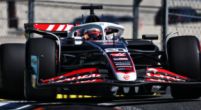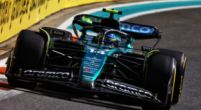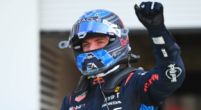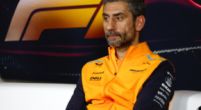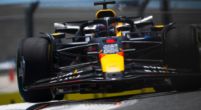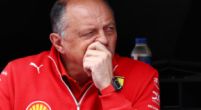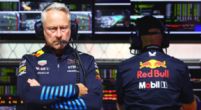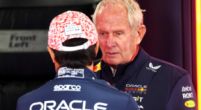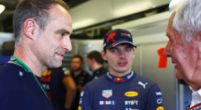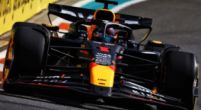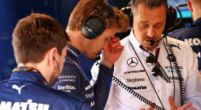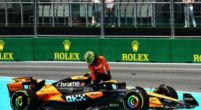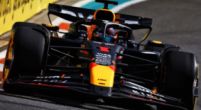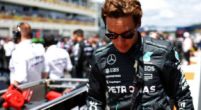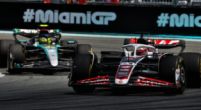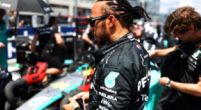Tech

Technical Analysis | AMR24 shows Mercedes' direction and has Red Bull ideas
Aston Martin have unveiled their 2024 F1 car, the AMR24, and put it on track at Silverstone for the filming day. The new car shows a mix of innovative solutions and extreme ideas, as the technical department tried to design a car that is able to fight for podiums and wins regularly in 2024. But where do the new solutions and the radical changes really hide? Let’s try to have a look here below.
As the technical director, Dan Fallows, pointed out, “we have managed to make a step on last year's car. And we're very pleased with what we've been able to achieve. But really, this is the first step. This season, we want to make sure we've got a good platform for development. And that's what we've been really focusing on. I think we've managed to achieve that.”
These words prove that the Silverstone team had tried to optimise everything that already worked on the AMR23 and added new solutions to increase their performance in those areas where they lacked compared to their competitors. The technical director said if they have done a good job, Red Bull could be beatable in 2024, despite the great advantage they had at the end of last year: "There's still a lot of lap time to come, and we take the approach that Red Bull are absolutely beatable. That's what we're chasing after, we're focusing on them, and that's what we're aiming for."
For this reason, Aston Martin mainly focused on two key aspects in developing their 2024 car: improving aerodynamic efficiency and increasing the amount of downforce generated by the car's body. These two aspects seem in contrast with each other, but they were where Aston Martin were really behind Red Bull from the beginning of 2023. Let’s try to have a look at what they changed to accomplish these ambitious goals.
New front wing and a "letterbox" cooling inlet
Starting with the frontal photo, the AMR24 shows many innovative solutions in all the front wing and nose areas. As for the front wing, the nose is no longer attached to the mainplane. Instead, it is attached to the second flap, following the Red Bull philosophy (green arrow). Aston Martin has returned to following the high nose philosophy, as the nose/wing complex is very far from the ground, to increase the flow rate of undisturbed air destined for the Venturi channels.
Then, the design of the flaps themselves has also changed, especially the penultimate and final ones, which have a very pronounced chord (distance between an aerofoil's leading edge and its trailing edge) with a descending trend towards the endplate (red arrow), following the out-wash philosophy (i.e. pushing the flow outside the front wheel, to reduce drag).
The traditional push-rod scheme has been maintained. Still, it is possible to see a different profile of the upper triangle front arm, which is anchored at the highest point of the chassis and which shows a different cover at the attachment to the wheel. This change is not only for mechanical reasons but, above all, for an aerodynamic reason (purple arrow), as the upper bone diverts the flow coming from the front wing towards the outside to better manage the front tyre wake turbulence. Furthermore, the difference in height between the front arm and the rear arm of the upper triangle has been increased to accentuate the anti-dive effect (blue arrow), with a consequent gain in performance under braking and in load shifting.


These solutions to the car's front end aim to increase the load produced and reduce the drag generated by the front wing. As for the suspension changes, the aim is to improve tyre management, especially on front-limited tracks, where the AMR23 always suffered last year due to its understeering nature.
From this photo, it is possible to see two other solutions for the new car. The cooling inlet and a slight change to the mirror. Regarding the cooling inlet, Aston Martin are the only team to have gone to such extremes in 2024, fully embracing the solution already present on the RB19. Due to the very small dimensions, the cooling inlet is now wider and shallower and has become a proper "letterbox inlet" inlet. This new solution reduces the front section to a minimum without compromising the cooling of all the internal components. The lower lip is placed very forward and attaches to the (almost) highest point of the chassis, becoming a real "tray" useful for separating the flow (orange arrow). The two small profiles located above and below the mirror, which had a purely aerodynamic function, have been eliminated (pink arrow).
These changes in the car's central area ensure that the air intended for cooling is drawn from the highest and most undisturbed area possible while also increasing the undercut under the cooling inlet, with a bigger airflow channel directed towards the rear.
A huge undercut and the push-rod rear suspension
Moving on to the side view, it’s possible to see innovative solutions in the sidepods' design. As regards the new version, there is a huge undercut, and the lower part of the sidepod itself has been further hollowed out in the lower area (thanks also to a different placement of the radiating masses inside) to create a second channel to feed the beam wing and the diffuser (arrow and yellow line). The top of the sidepod has also been slightly modified and now has a more curved edge than before (red arrow). The water-slide inside the sidepod has been slightly narrowed compared to last year’s version. However, it still pushes a good amount of undisturbed flow directly to the car's rear end, increasing the downforce generated.

The rear view allows us to notice this reduction in the width of the internal water-slide and also allows us to observe another crucial change: the new rear suspension. Aston Martin, like Williams, buys the gearbox, engine and rear suspension directly from Mercedes. Toto Wolff's team have shifted to a different solution for the rear suspension in 2024, adopting the push-rod philosophy, in line with all other teams (except Ferrari and Haas).
This drastic change in philosophy, combined with a smaller gearbox, has both a mechanical and an aerodynamic function. From an aerodynamic point of view, these changes allow the keel of the diffuser to be smaller, increasing the flow of air underneath the car and the consequent extraction of the flow from the diffuser. Furthermore, from a mechanical point of view, this solution guarantees better load management, especially in traction, an aspect in which the AMR23 has always been excellent, but the Mercedes W14 has always suffered.

As the technical director Dan Fallows pointed out in his interview, the aim of all these changes was to build a solid car to develop throughout the season: “So the main aim for us is really to make sure that this car is a good platform to put those developments on during the season. We've seen particularly last season, but also the season before, the in-season development race is absolutely fierce and we want to be as competitive as we have been going into the new seasons. That's what we've been really focused on is to make sure that you know we've got a good stable basis for us to go and develop the car and keep those updates coming and keep the performance coming.”
These kinds of words really underline the importance of creating a good “basis” (what Fallows means is a stable and good aero-mechanical platform) for the developments, an aspect which Aston Martin suffered a lot last year, but which is crucial to improve the car’s performance as the races go on. Moreover, he said that “[...] a lot of stuff under the hood which you know hopefully you won't see tomorrow, but we will obviously try and keep some of that under wraps.” meaning that the most important and radical changes have been made to the underfloor and Venturi channels, to extract the maximum downforce, which will allow the team to also use smaller rear wings, improving their overall performance.
In conclusion, the AMR24 is a completely new car with many innovative and brave solutions. Aston Martin’s aim is to be back fighting for podiums and maybe victories regularly. In this writer's opinion, this idea isn't even that ambitious, as the team has all the facilities, drivers, and knowledge to keep fighting for the top positions in 2024.









